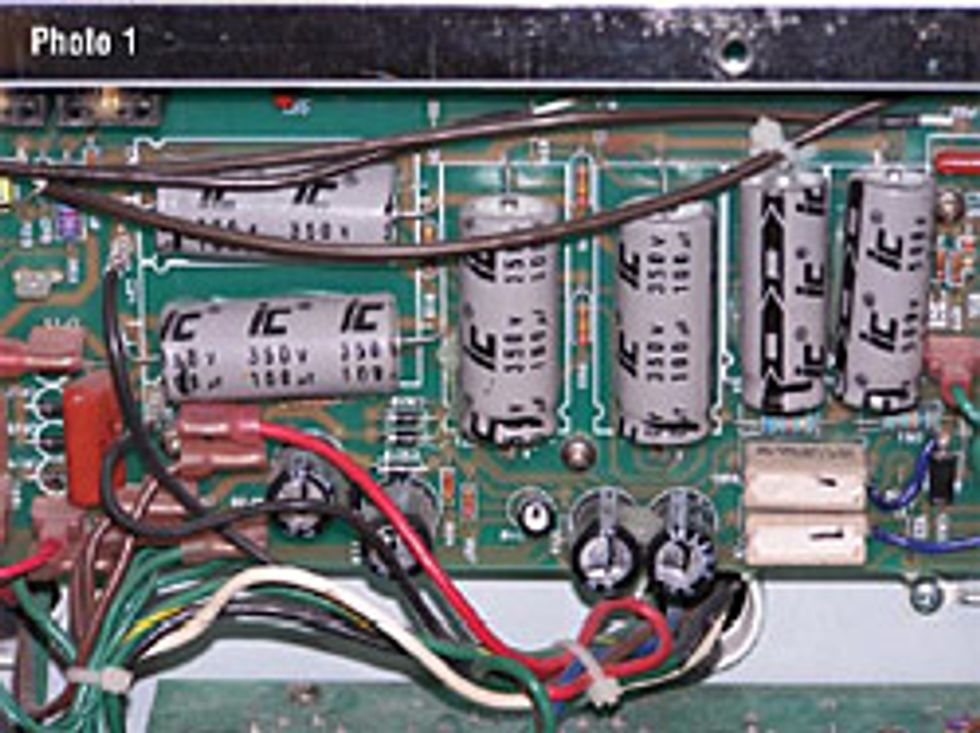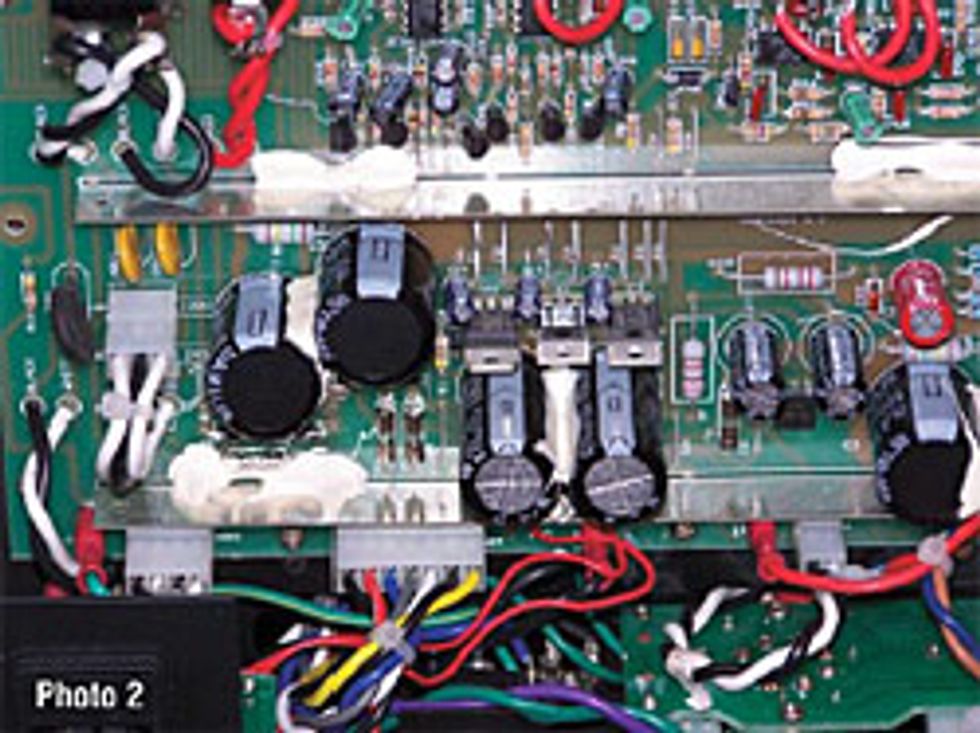 If you keep your amp long enough, one day it will slowly start sounding a little off. It may develop a buzzy hum or an off-tune “ghost note,” or it may start oscillating. Twiddling the controls, changing speakers, and replacing tubes won’t help the sound. Your tech will give you the bad news: it needs a cap job, or a replacement of all of the amplifier’s power filter capacitors.
If you keep your amp long enough, one day it will slowly start sounding a little off. It may develop a buzzy hum or an off-tune “ghost note,” or it may start oscillating. Twiddling the controls, changing speakers, and replacing tubes won’t help the sound. Your tech will give you the bad news: it needs a cap job, or a replacement of all of the amplifier’s power filter capacitors. The capacitors we’re talking about are aluminum electrolytic caps, which are used to block direct current (DC) but let alternating current (AC) through. They are used in the power supply inside your amp to filter out AC line voltage hum and to prevent the various parts of your amp from unintended interaction through the power supplies.
This kind of cap is made from thin aluminum foil. The foil has an electricallygrown coating of aluminum oxide. A conductive fluid inside the cap acts as one terminal of the capacitor, the aluminum film acting as the other terminal. The micro-thin layer of aluminum oxide is the insulator. Over the years, the fluid evaporates and the oxide layer degrades until eventually the cap can’t do its job any more. Electrolytic cap failure is a normal part of capacitor aging.
 Some people object to cap jobs if they put a non-original part into a vintage amp. However, it is 100% certain that the amp does not sound like it did when it was new if it has failing caps. It is also certain that the caps will get worse. Putting in fresh, new electrolytic capacitors will restore it to sounding much like it did when it was new, just like new tubes pep up the sound of an amp.
Some people object to cap jobs if they put a non-original part into a vintage amp. However, it is 100% certain that the amp does not sound like it did when it was new if it has failing caps. It is also certain that the caps will get worse. Putting in fresh, new electrolytic capacitors will restore it to sounding much like it did when it was new, just like new tubes pep up the sound of an amp. Capacitors come in two packaging styles – axial and radial. These could also be called “lay-down” and “stand-up” styles, respectively. Older Fender amps use the lay-down axial style as shown in Photo 1. Today’s electronics industry uses mainly stand-up radial caps. The Workhorse Pony picture shows the use of modern radial caps. The paired filter caps are between the steel PCB stiffening rails shown in Photo 2. These compact caps let us put the filter cap right next to what needs filtering.
Capacitor makers specify a storage life of only five to seven years for their products; a cap that has been sitting for several years may fail soon after being turned on. This why I think that hunting down “vintage” new old stock (NOS) electrolytics is a bad choice. They are probably going to fail sooner rather than later. It is possible to “reform” the oxide insulating layer through a technical process, but this is a tricky process to do correctly. A vintage amp that has been sitting in a closet for 20 years may need a cap job immediately.
Caps are better than they used to be. Newly manufactured caps will probably be a quarter of the size and work ten times longer than caps from the 1960s. And that’s another good reason to re-cap your amp – the new caps your tech puts in will last longer than the old ones did, and sound like new for longer.
To me, an amp that can’t be turned on for fear of burning it up is not an amp – it’s a piece of furniture. You must choose whether the vintage amp will have a cap job and continue to be an amp or not. My opinion is that amps were intended to make sound, not just to be looked at; I’ll take the cap job every time.
R.G. Keen
Cheif Engineer
Visual Sound
www.visualsound.net














